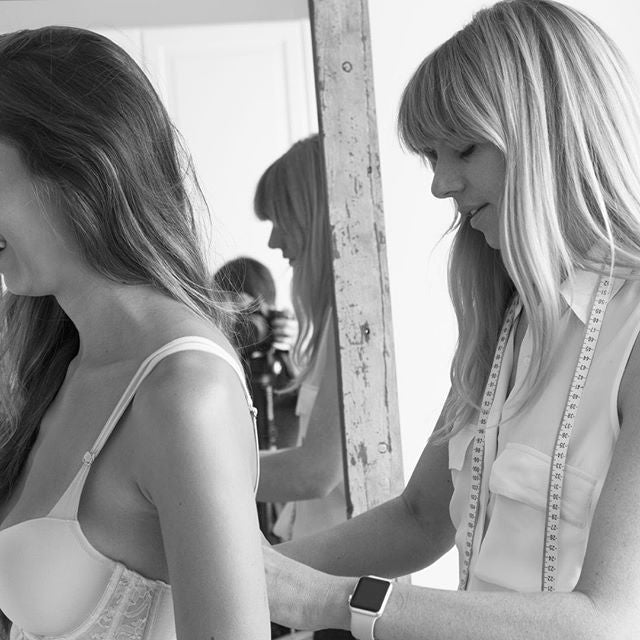
Some bras are engineered to be comfortable and supportive, while others are setup for instability. Once I knew what to look for I became a popular bra shopping companion among my friends, who were all amazed by how much more stable and comfortable their bras could be throughout the day.
They can be hard to find, but it will be worth it when you do!

Continuous elastic around the bottom of the bra, all the way around your rib cage and through to the hook and eye at the back, will provide you with a stable base for the bra.
If you're checking out a bra and the elastic that runs around the bottom of it is less than ~1cm / 1/2 inch wide it could dig in and hurt you. Part of the purpose of the elastic in a bra is to hold the underwires open and against your body. To do this requires tension on the elastic - thin elastic will either not be strong enough to provide sufficient tension or it will dig in. Wider elastic distributes this tension over a larger surface area so it doesn't dig in as sharply.
Good quality bras are lined with a rigid tulle or other stabilising fabric at the front of the bra. Using a rigid fabric here is key to the cups and wires being held stable throughout the day.
It will still have the elastic running around (per point 1) and so it may stretch a teeny-tiny bit, but not at all within the fabric itself. Trust us, if this centre fabric can move, it will move and you may end up with wires digging in or cups moving to places they shouldn't be.

Side boning distributes the pressure of the elastic more smoothly to the edge of the wire and cup. If it's well placed it should create a more stable bra and is less likely to yank your wires into poking you (ouch!).
Some of you may have had issues in the past with side boning. It was probably on an otherwise poorly engineered or ill-fitting bra.
You know those bras with a small ribbon of fabric no wider than your finger between the cups? Good luck making them stay put through the day. A good centre front should be at least 2cm / 1 inch wide to give those wires a stable base.
This could be either like our patent-pending design where there are two anchor points for the strap, or it could be that it joins a rounded arch of fabric on the back. Either way, it helps distribute the pressure of the strap elastic, making it less likely your straps will pull up the back of your bra.
It may be that you have found a bra that despite violating one or more of these rules is your most comfortable. Lucky you! If you do get the chance, try a bra that meets these principles - you might realise that you could be much better supported.
Needless to say, I've made sure that all of our bras meet the brief that I've laid out. Every bra that you get from B.PRIVÉ will be beautiful AND comfortable.
Want to learn more?
Click here to find out if you're the victim of a poor fit